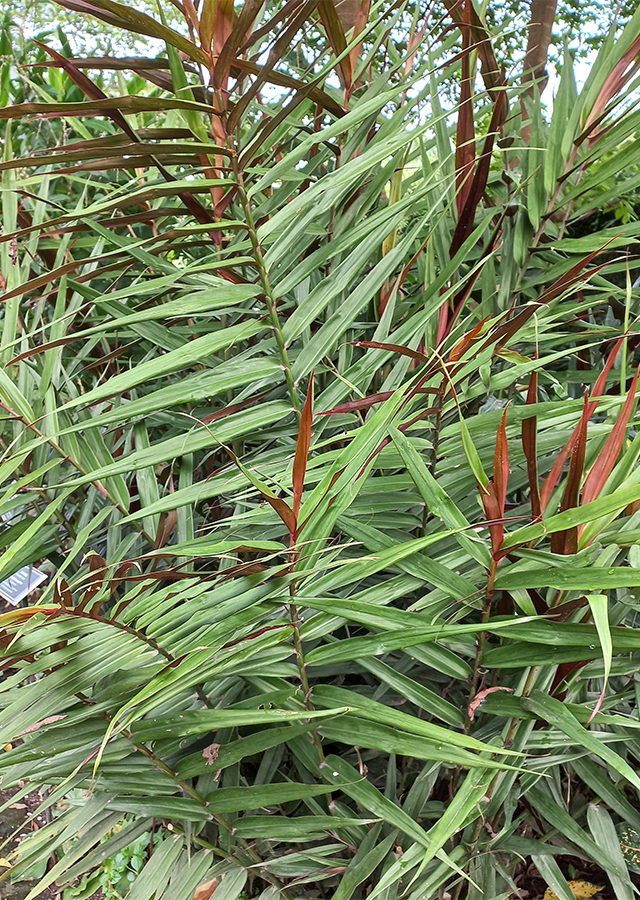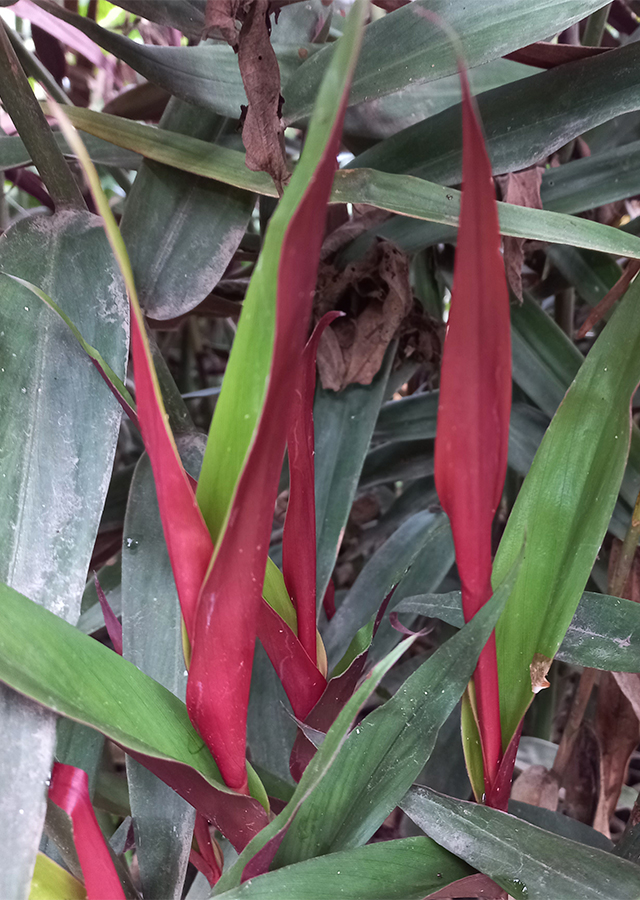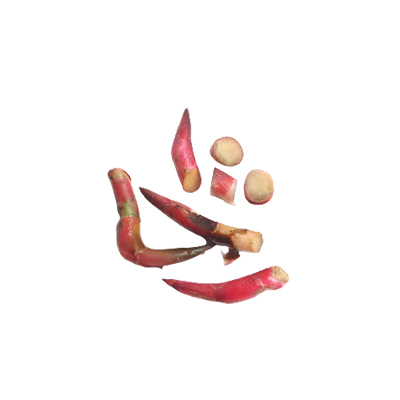Red Bamboo Ginger
Alpinia luteocarpa Elmer
Zingiberaceae
Location in our garden
Principal



Synonym
-
Habitus
Herbaceous. An aromatic low-growing herb growing up to 1.5 m high, with horizontal undergrown rhizomes and erect stems.
Part Used
Rhizome
Growing Requirements
Need Shade
Habitat
Forest
Terrestrial
Overview
Red bamboo ginger comes from the Philippines and is also found in India, Thailand, and the Malay Peninsula. Red bamboo ginger belongs to the Zingiberaceae family which is generally grown as an ornamental plant, because it has a unique leaf color unlike other ginger plants. This plant has also been used in Chinese medicine, for its warming properties.
Vernacular Names
Luyang itim (Philippines), Purple ladder, Small shell ginger (English).
Agroecology
This ginger is usually found growing in moist forests, on steep slopes, at an altitude of 600 m above sea level. This plant prefers a shaded or partially shaded position with soil conditions that are rich in organic matter, well drained, high humidity, and the need for water is in the moderate range.
Morphology
- Rhizome - horizontal underground.
- Stems - erect.
- Leaves - lanceolate, grey green to dark green on the upper surface with red or dark reddish purple underside, wide at the base and narrowing to the tip, arranged in a single plane along the stem.
- Flowers - in clusters of three to five at the ends of branches, each flower with several dark brown to purple bracts that clasp the stalk of the flower. Each flower has a pink to red calyx fused along its length, with white petals fused along half their length. Each flower contains six stamens, with one fertile pollen-producing stamen.
- Fruits - yellow, round, and three parted, containing many small seeds.
Cultivation
Propagated by seeds and by rhizome division. To speed up germination, soak the seeds in water for 2 days and dry them at 22-24 °C.
Chemical Constituents
Penylpropanoids, diarylheptanoids, and diterpenoids.
Traditional Medicinal Uses
- Rhizome used for digestive disorders.
- Used in traditional Chinese medicine for its warming properties.
Part Used
Reference Sources
- Stuartxchange. 2015. Philippine Medicinal Plants: Bamboo ginger. http://www.stuartxchange.org/BambooGinger. 18-11-21.
- Flora Fauna Web. 2019. Alpinia luteocarpa. https://www.nparks.gov.sg/florafaunaweb/flora/3/4/3425. 18-11-21.

